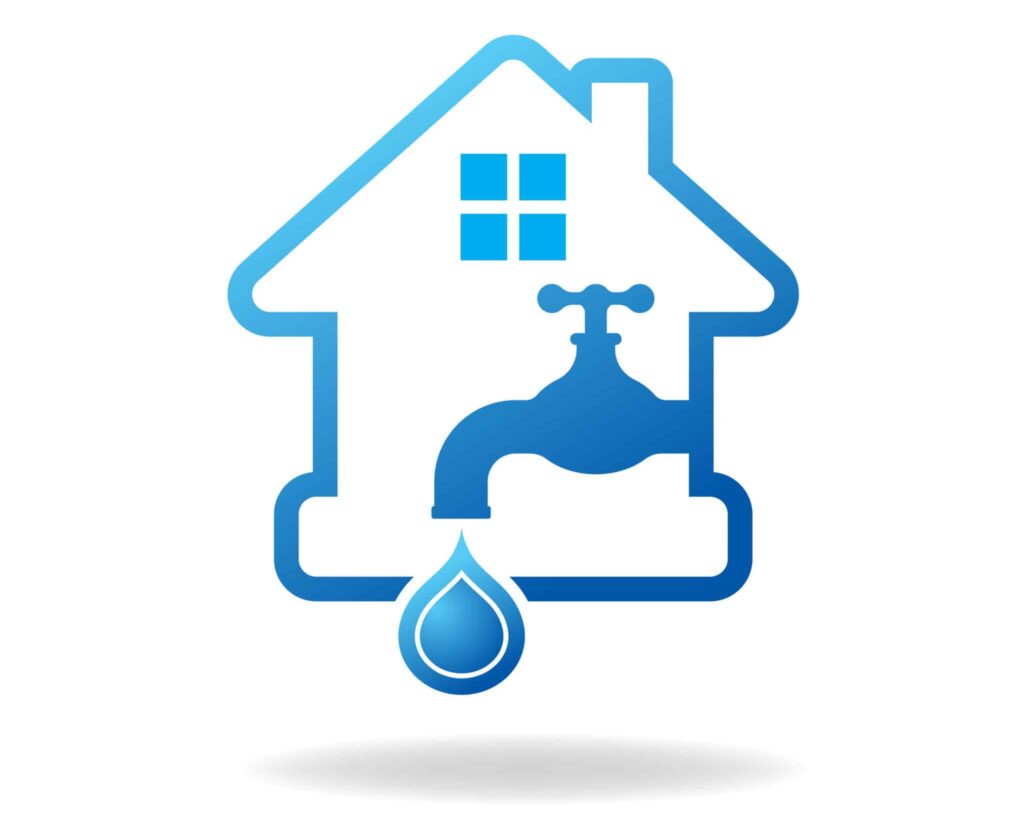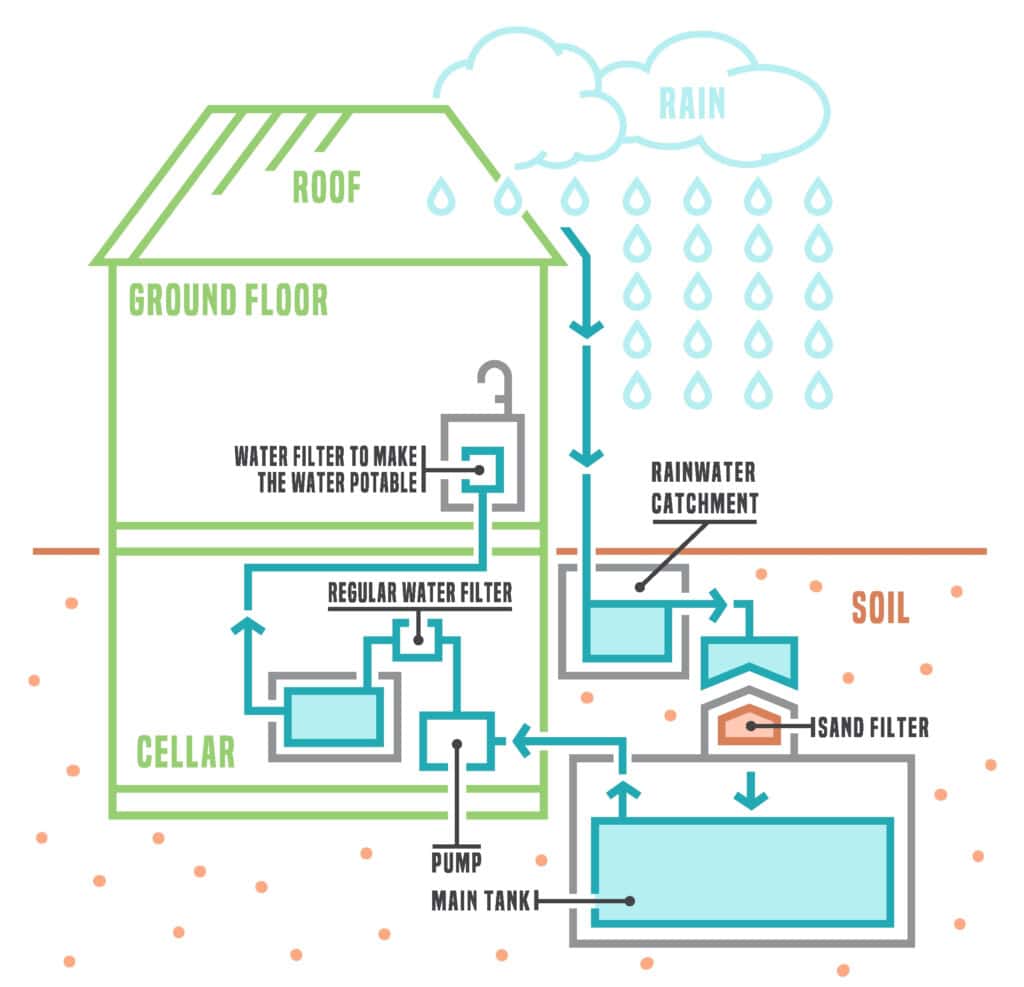5 Rainwater Harvesting Tips

Are you curious about how rainwater harvesting can benefit your home and environment in Arizona?
This sustainable practice is gaining traction, and for good reason.
Rainwater harvesting is a method that involves collecting and storing rainwater for various uses. In a state like Arizona, where water scarcity is a significant issue, implementing rainwater harvesting can be a game-changer for both individuals and communities.
By capturing rainwater, you can reduce your dependency on municipal water supplies, cut down on water bills, and contribute to environmental conservation.

Photo from iStock – Credit: Ratsanai
Importance of Water Conservation in Arizona
Did you know that Arizona faces some of the most severe water shortages in the United States?
With its arid climate and limited rainfall, water conservation is not just important but essential. Implementing strategies like rainwater harvesting can significantly mitigate these challenges.
Benefits of Rainwater Harvesting
- Water Conservation: By collecting and storing rainwater, you reduce the demand for groundwater and municipal water supplies. This is crucial in a state where every drop counts.
- Cost Savings: Utilizing harvested rainwater for non-potable uses such as irrigation, flushing toilets, and even laundry can lower your water bills. Over time, these savings can be substantial.
- Environmental Impact: Harvesting rainwater helps to reduce runoff, which can carry pollutants into natural water bodies. By managing this runoff, you contribute to cleaner rivers and lakes.
- Self-Sufficiency: In times of drought or water restrictions, having a personal rainwater harvesting system ensures you have a reliable water source for essential needs.
- Sustainable Living: Embracing rainwater harvesting is a step towards a more sustainable lifestyle. It reduces your carbon footprint and supports the local ecosystem by promoting water efficiency.
Understanding the importance of water conservation and the multifaceted benefits of rainwater harvesting sets the stage for exploring this eco-friendly practice in more detail. Let’s dive into what rainwater harvesting is and how it works.
Understanding Rainwater Harvesting
Have you ever wondered what exactly rainwater harvesting is and how it can be implemented at your home? This section will clarify the concept and outline the basic mechanisms involved.
What is Rainwater Harvesting?
Rainwater harvesting is the process of collecting and storing rainwater for future use. Instead of letting rainwater run off and become wasted, you can capture it from surfaces like roofs and direct it into storage systems. This harvested water can then be used for various purposes, reducing reliance on traditional water sources.
How It Works
- Collection: Rainwater is collected from surfaces such as roofs. Gutters and downspouts are used to channel this water into a storage system. The type of roofing material can affect water quality, so it’s essential to use non-toxic, smooth surfaces.
- Filtration: The collected rainwater passes through a filter to remove debris and contaminants. Filters can range from simple mesh screens to more complex systems that remove finer particles and impurities.
- Storage: The filtered water is stored in tanks or cisterns. Storage tanks can be above ground or below ground, made from materials like plastic, concrete, or metal. Properly designed storage systems prevent evaporation and contamination.
- Distribution: Harvested water is then distributed for use. This can involve a gravity-fed system or a pump, depending on the storage location and water usage needs. It can be used for irrigation, household chores, or even potable uses with adequate treatment.

Photo from iStock – Credit: Anna Bergbauer
Benefits of Rainwater Harvesting in Arizona
- Water Conservation: Helps mitigate water shortages by reducing demand for municipal water supplies.
- Cost Savings: Lowers water bills through the use of free rainwater.
- Environmental Impact: Reduces runoff, which helps prevent erosion and water pollution.
Understanding these fundamental aspects of rainwater harvesting provides a solid foundation for considering how it might work for you in Arizona. Next, we’ll delve into the specific benefits of rainwater harvesting in the state.
5 Essential Rainwater Harvesting Tips
Are you ready to make the most out of rainwater harvesting this year? Here are five essential tips to optimize your system for efficiency and sustainability.
Tip 1: Optimize Your Collection Area
Best Materials and Positioning: The effectiveness of rainwater harvesting starts with your collection area. Ensure that your roof is made of non-toxic materials like metal or tile, which are ideal for collecting clean water. Avoid materials that can leach harmful substances. Position gutters and downspouts to maximize water capture. Consider installing rain chains or diverters to direct water flow efficiently.
Tip 2: Efficient Storage Solutions
Types of Tanks and Maintenance: Choosing the right storage tanks is crucial. Above-ground tanks are easier to install and maintain but may take up space. Below-ground tanks save space and protect water from temperature fluctuations but can be costlier to install. Opt for durable materials like polyethylene, fiberglass, or concrete. Regularly inspect tanks for cracks or leaks and clean them to prevent algae and sediment buildup.
Tip 3: Filtration and Purification Methods
Ensuring Clean Water: Keeping your harvested water clean is essential. Install pre-filters at the collection points to remove large debris. Use first flush diverters to discard the initial runoff that may contain contaminants. For potable use, incorporate fine filters and UV or chemical disinfection systems to purify the water. Regularly maintain and replace filters to ensure efficiency.
Tip 4: Utilizing Harvested Water Effectively
Best Uses for Harvested Water: Harvested rainwater can be used for various purposes. For non-potable uses, irrigate your garden, wash your car, or flush toilets. If properly treated, it can also be used for drinking and cooking. Assess your household needs and plan accordingly to maximize the use of harvested water, reducing your dependence on municipal supplies.
Tip 5: Regular Maintenance and Checks
Preventing System Issues: Routine maintenance is vital to keep your rainwater harvesting system functioning effectively. Inspect and clean gutters and downspouts regularly to prevent clogs. Check for and repair any leaks or damages in the collection and storage systems. Monitor water quality periodically, especially if using it for potable purposes. Schedule professional inspections annually to ensure everything is in top condition.
By following these tips, you can ensure that your rainwater harvesting system is optimized, making the most of every drop of rain that falls.
Rainwater Harvesting Regulations in Arizona
Are you aware of the regulations governing rainwater harvesting in Arizona? Understanding these rules is crucial to ensure compliance and to benefit fully from your system.
State Guidelines and Laws
Arizona encourages rainwater harvesting and has supportive policies in place. The state law permits the collection of rainwater from rooftops for non-potable uses without requiring a permit.
However, if you plan to use harvested water for potable purposes, you need to adhere to specific treatment standards and might need a permit from local health departments.
The Arizona Department of Water Resources (ADWR) provides guidelines to help residents implement rainwater harvesting systems efficiently. It’s essential to review these guidelines to ensure your system meets all safety and operational standards.
Local Regulations in Golden Valley, AZ
Golden Valley has its own set of rules complementing state regulations. Local ordinances may dictate the design and placement of rainwater harvesting systems, ensuring they do not interfere with public utilities or cause hazards. It’s vital to check with local authorities or the city planning department for any specific requirements or restrictions in your area.
Golden Valley residents are encouraged to attend local workshops and seminars on rainwater harvesting. These events often provide valuable insights and updates on best practices and legal requirements.
Compliance Tips
- Research: Start by researching state and local regulations. The ADWR website and local government portals are good resources.
- Permits: Determine if you need permits, especially if you plan to use harvested rainwater for drinking or other potable uses.
- System Design: Ensure your system design complies with local building codes and standards. Engage a professional if necessary.
- Inspection: Schedule regular inspections to ensure your system remains compliant with evolving regulations.
Understanding and adhering to these regulations will help you avoid legal issues and optimize the benefits of your rainwater harvesting system.
Choosing the Right Rainwater Harvesting System
Selecting the appropriate rainwater harvesting system is crucial for efficiency and effectiveness. Here’s a guide to help you choose the best system for your needs.
Types of Systems Available
- Direct-Pumped System: Ideal for homes, this system uses a pump to distribute water from the storage tank directly to the point of use. It’s suitable for gardens and irrigation.
- Indirect-Pumped System: This system pumps water from the storage tank to a header tank, and gravity then distributes the water. It’s useful for both irrigation and indoor use.
- Gravity System: Utilizes gravity to feed water from the collection point to the storage and distribution areas. It’s the simplest and most cost-effective method, but it requires an elevated storage tank.
- Wet System: Involves underground pipes that stay filled with water, connecting multiple downspouts to the storage tank. This system is efficient for large roofs but requires proper sealing to prevent contamination.
- Dry System: Directs rainwater from the roof directly into the tank through a single pipe. It’s easy to install and maintain, ideal for small to medium-sized roofs.
Factors to Consider
- Roof Size and Material: The size and material of your roof will determine how much water you can collect. Non-toxic, smooth surfaces are best for collecting clean water.
- Rainfall Patterns: Understanding local rainfall patterns will help you estimate how much water you can harvest. This information is crucial for sizing your storage tanks.
- Storage Capacity: Calculate your water needs and choose a storage tank size accordingly. Ensure your tank is made of durable, non-toxic materials.
- Budget: Your budget will influence the type and size of the system you can install. While gravity systems are cheaper, pumped systems offer more flexibility.
- Space Availability: Consider the space you have available for installing tanks and pipes. Above-ground tanks are easier to access but require more space, while below-ground tanks save space but are costlier to install.
Installation and Maintenance
- Professional Installation vs. DIY: Decide whether you will install the system yourself or hire a professional. DIY can save costs but requires technical know-how.
- Maintenance Needs: Choose a system that you can maintain easily. Regular checks and cleaning are necessary to ensure the system functions well.
- Future Expansion: Plan for future needs. If you anticipate increasing your water usage, ensure your system can be easily expanded.
By considering these factors, you can select a rainwater harvesting system that meets your needs and maximizes efficiency.
Installing Your Rainwater Harvesting System
Ready to install your rainwater harvesting system? Here’s a step-by-step guide to help you through the process, whether you choose to DIY or hire a professional.
Step-by-Step Installation Guide
- Planning and Design: Begin by assessing your water needs, roof size, and budget. Design a system that includes collection, filtration, storage, and distribution components.
- Collecting Materials: Purchase the necessary materials, such as gutters, downspouts, pipes, filters, and storage tanks. Ensure all materials are non-toxic and suitable for rainwater harvesting.
- Prepare the Roof and Gutters: Clean and inspect your roof and gutters. Install or repair gutters and downspouts to ensure they effectively channel water into your collection system.
- Install First-Flush Diverter: A first-flush diverter ensures the initial runoff, which may contain contaminants, is diverted away from your storage tank. Install it at the downspout.
- Set Up the Storage Tank: Position your storage tank in a suitable location. If you’re using an above-ground tank, ensure it’s on a stable and level surface. For below-ground tanks, excavate the site and install the tank according to manufacturer instructions.
- Connect Pipes and Filters: Connect the downspout to the first flush diverter and then to the storage tank. Install any additional filters to ensure the water entering the tank is clean.
- Install a Pump (if needed): If your system requires a pump for water distribution, install it according to the manufacturer’s guidelines. Ensure the pump is compatible with your storage tank and distribution needs.
- Set Up Distribution Lines: Install pipes and valves to distribute the harvested water to its points of use, such as garden hoses, irrigation systems, or indoor plumbing.
- Test the System: Once everything is installed, run a test to ensure water flows smoothly from the collection area to the storage tank and through the distribution lines. Check for leaks and proper operation of filters and pumps.
Professional vs. DIY Installation
Professional Installation: Hiring a professional ensures the system is installed correctly and efficiently. Professionals can handle complex systems and ensure compliance with local regulations. This option is more expensive but reduces the risk of errors.
DIY Installation: Installing the system yourself can save money and provide a sense of accomplishment. However, it requires a good understanding of the components and processes involved. It’s best suited for simpler systems or those with some technical skills.
Post-Installation Tips
- Regular Inspections: Check the system regularly for any signs of wear, leaks, or blockages. Early detection of issues can prevent costly repairs.
- Seasonal Maintenance: Prepare your system for seasonal changes. For example, in winter, ensure your storage tank and pipes are protected from freezing temperatures.
- Water Quality Testing: Periodically test the quality of the harvested water, especially if used for potable purposes. This ensures the water remains safe and clean.
By following these steps and tips, you can successfully install a rainwater harvesting system that meets your needs and enhances your home’s water sustainability.
Maintenance of Rainwater Harvesting Systems
Keeping your rainwater harvesting system in top condition is crucial for its efficiency and longevity. Here are some essential maintenance tips to ensure your system functions optimally year-round.
Routine Checks and Upkeep
- Inspect Gutters and Downspouts: Regularly check gutters and downspouts for debris, such as leaves and twigs. Clean them out to prevent clogs, which can impede water flow and reduce the efficiency of your system.
- Clean Filters and Screens: Filters and screens can become clogged with debris over time. Clean or replace them periodically to maintain optimal water flow and quality. This is especially important for first flush diverters and fine filters used for potable water.
- Check Storage Tanks: Inspect your storage tanks for any signs of damage, such as cracks or leaks. Ensure the tank lid is secure to prevent contaminants from entering the water. Clean the tank interior as needed to prevent algae growth and sediment buildup.
- Monitor Pumps and Valves: If your system includes a pump, check it regularly to ensure it operates smoothly. Lubricate moving parts and replace any worn-out components. Similarly, inspect valves for proper functioning and replace them if necessary.
Troubleshooting Common Issues
- Low Water Pressure: If you experience low water pressure, check for clogs in pipes and filters. Ensure the pump is working correctly and that there are no leaks in the distribution system.
- Algae Growth: Algae can grow in storage tanks exposed to sunlight. Use opaque tanks to prevent light penetration and clean the tank interior regularly. Adding a UV filter can also help control algae.
- Contamination: Regularly test the water quality, especially if it’s used for drinking. If contamination is detected, identify the source (e.g., roof material, filters) and take corrective measures. Consider installing additional filtration or purification systems if needed.
- Leaks: Inspect all components of your system for leaks, including gutters, pipes, and tanks. Repair any leaks promptly to prevent water loss and potential damage to the system.
Seasonal Maintenance
- Winter Preparation: In colder climates, protect your system from freezing temperatures. Insulate pipes and storage tanks, and consider draining the system if you won’t use it during winter. Ensure that any above-ground components are securely fastened to withstand strong winds.
- Summer Checks: During hot months, monitor water levels closely, as increased evaporation can occur. Ensure your system can handle the higher demand for irrigation and other uses.
Professional Inspections
Even if you perform regular maintenance, scheduling an annual professional inspection is beneficial. Professionals can identify potential issues that may not be apparent and ensure your system complies with current regulations.
By following these maintenance guidelines, you can ensure your rainwater harvesting system operates efficiently and provides clean, usable water for years to come.
FAQs
-
What is rainwater harvesting?
Rainwater harvesting is the process of collecting and storing rainwater for later use. It involves capturing rain from surfaces like rooftops and channeling it into storage systems.
-
Is rainwater harvesting legal in Arizona?
Yes, rainwater harvesting is legal and encouraged in Arizona. State guidelines support the collection of rainwater for non-potable uses without requiring permits. However, if you plan to use the harvested rainwater for potable purposes, specific treatment standards must be met, and you may need a permit from local health departments.
-
What are the benefits of rainwater harvesting?
Rainwater harvesting offers several benefits, including water conservation, cost savings on water bills, reduced environmental impact by lowering runoff, and increased self-sufficiency during droughts or water restrictions. It also contributes to a more sustainable lifestyle by reducing reliance on municipal water supplies.
-
How do I maintain a rainwater harvesting system?
Regular maintenance is crucial for efficient operation. This includes cleaning gutters and downspouts, inspecting and cleaning filters and screens, checking storage tanks for leaks or damage, monitoring pumps and valves, and ensuring water quality through periodic testing.
-
Can I drink harvested rainwater?
Yes, you can drink harvested rainwater, but it requires proper treatment. This involves filtering to remove debris and contaminants and disinfecting to kill harmful pathogens.


















